Thursday
Featured StoriesThe 80th Birthday of Khenpo Tsultrim Gyamtso Rinpoche
article by Walker Blaine
As Shambhala’s representative to the 80th birthday of Khenpo Tsultrim Gyamtso Rinpoche, I am delighted to offer a short account of this wonderful event. This occasion occurred during Tibetan New Year, or Losar, in Kathmandu, Nepal. Khenpo Rinpoche, as he is often known, presently resides at Thek Chok Ling nunnery, which is a short walk from the famous sacred site, the Boudhanath stupa. He is one of the preeminent senior teachers in the Karma Kagyu lineage and is widely known and loved in our community.
Khenpo Tsultrim Gyamtso Rinpoche’s History with Shambhala
Khenpo Tsultrim Gyamtso Rinpoche first taught in Shambhala in Boulder, in 1985. In 1991, the Sakyong invited him to teach our senior students on an ongoing basis. From then until 2006, Khenpo Rinpoche taught many courses in Shambhala, notably 13 advanced trainings at Karme Choling, and related programs at Dorje Denma Ling, Dechen Choling, and Shambhala Mountain Center. The Sakyong and many of the senior teachers in Shambhala have studied with Khenpo Rinpoche either personally or through his recorded and published works. Khenpo Rinpoche is well known for his lively style of teaching, his mastery of the songs of Milarepa, and his emphasis on realizing the view. As one senior teacher in the Kagyu lineage put it, “No one learns as much or as fast as with the Khenpo.” The Vidyadhara, Chogyam Trungpa Rinpoche after meeting Khenpo Rinpoche remarked, “More yogi than khenpo.”
The New Year’s Day and a Celebration of a Lifetime
The celebrations and offerings at the 80th birthday celebration were massive. Losar is a traditional time to make offerings to teachers and nearly 1,000 people visited Thek Chok Ling to wish Khenpo Rinpoche well and receive his blessings on the auspicious day. Tibetans generally count themselves a year older on the first day of the year, so this marked the beginning of the birthday festivities. After morning practice held in four shrine rooms at the nunnery, everyone was offered non-alcoholic chang (Tibetan barley beer), coffee, and rice with nuts and fruit. Afterwards everyone was able to offer a khata to Khenpo Rinpoche and his principle student, Dzogchen Ponlop Rinpoche. Afterwards, a huge Indian banquet was served to all.
Besides Khenpo Rinpoche’s nunneries in Nepal and Bhutan, many other groups attended at the festivities. Three notably large groups were the Nalandabodhi sangha, who were on pilgrimage with Ponlop Rinpoche; Zab Sang Shedrup, Khenpo Rinpoche’s Taiwanese sangha; and the vast array of Khenpo Rinpoche’s European disciples. Smaller groups of students were evident at the event too, such as the Awakened Heart Sangha from Wales, led by Lama Shenpen Hookam; Circulo Niguma from Spain, led by Lama Tashi Lhamo; Khenpo Rinpoche’s Malaysian sangha; students from the winter course at Pullahari Monastery; students from Scotland’s Samye Ling and Holy Island; and about 20 members of the Shambhala sangha. Many eminent lamas and khenpos from the Kathmandu region and lots of local well-wishers also attended the event.
Following the New Year’s Day celebrations, there were two days of longevity prayers offered by Khenpo Rinpoche’s nuns. For the Taiwanese, Malaysian, and Western students these days began with sadhana practice and continued with pilgrimages to many of the sacred sites in the region. Mornings also began with lujong, Tibetan yogic exercise, instructed by Shambhala sangha member Alexandra Kalinine. In the evenings groups sang the songs of Milarepa, Khenpo Rinpoche, and other masters, in Tibetan, English, Chinese, Spanish, and sometimes as many as six other languages.
A Multitude of Offerings
On the third day after the New Year, the celebration of Khenpo Rinpoche’s birthday formally began. There were two full days of performance offerings that began with a tenshuk, long-life offerings of body, speech, mind, quality, and activity. This ceremony involved 16 separate organizations, Shambhala among them, offering long-life statues, texts, stupas, vases, and double-dorjes to Khenpo Rinpoche during an extended long-life supplication. Amazingly, Khenpo Rinpoche offered back a 6-inch bronze Tara sculpture to each organization. Even more amazingly, the next day Rinpoche offered everyone at the event a 6-inch Tara, a text, and a small crystal ball, along with a CD of dharma songs. There were more than 600 full participants at the party.
The offerings during the two formal days of celebration included beautiful music and artful dancing. The Awakened Heart Sangha sang wonderful songs about the buddha within and the delight of working tirelessly for the benefit of others. Circulo Niguma offered several rousing Spanish versions of Milarepa songs and Tara dances. Singer-translator Jim Scott led the Pullahari program in a musical offering. The nuns of Thek Chok Ling and Bhutan presented formal Tara dances as well as more informal evening songs, such as Milarepa’s “Song of the Yogi’s Galloping Horse.”
This particular rendition included warrior cries and illusory horse-riding—much like the style Khenpo Rinpoche popularized in the West — except that 140 nuns cantering in a swirl of maroon robes through a courtyard at night took the practice to an unexpected level. There were many touching performances from all sanghas, and several that were completely amazing, particularly one by the Taiwanese sangha, which was near Olympic in quality. Composer Trish Burgess and a small troupe presented sections of her Yeshe Tsogyal opera, complete with a large mural from the New York performance stage set.
On the final day of celebration, many longevity prayers were sung, and cupcakes were served to all present by 16 offering goddesses. Letters were read to Khenpo Rinpoche from His Holiness Urgyen Trinley Dorje the 17th Karmapa, the Kongma Sakyong Jamgon Mipham Rinpoche (SMR Birthday Letter to KTGR), and Rigdzin Shikpo, who is one of Chogyam Trungpa Rinpoche’s earliest Western disciples as well as being a devoted student of Khenpo Rinpoche. Following the letter from the Sakyong, everyone with a connection to Shambhala sang the Shambhala Anthem and then let loose a rousing warrior’s cry that at least one Tibetan in the crowd gave a thumbs-up to. Throughout the event there was a theme of East meets West, and traditional meets modern.
Khenpo Rinpoche often watched the gathering from a window overlooking the Tek Chok Ling courtyard. From there he could easily watch performances, lujong practice, rehearsals, and the ongoing flow of guests moving about the nunnery. He seemed to take everyone in with a vast mind and a gentle gaze. The entire celebration was permeated with his compassion and vision. On the final afternoon, Khenpo Rinpoche came down to attend the culmination of the event from a throne set up facing the courtyard from beneath the shaded porch of the main temple. Rinpoche watched all the offerings with great interest and the occasional touch of play.
After the conclusion of the celebration, the five event coordinators met with him and said that they were planning a party for his 90th birthday that would include even better songs and dances. Khenpo Rinpoche responded that because, in equality, there was no better or worse, there could be nothing better than what had been offered. Then the coordinators said that each year between now and then, people would return to sing and dance. Rinpoche smiled at that moment and said, “Yakpo!” meaning, “Good!”
Part of the celebration of Khenpo Tsultrim Gyamtso Rinpoche’s birthday includes creating an endowment for his nunnery. If you would like to make an offering to this wonderful project, please click here. More about Khenpo Rinpoche’s activity can be found here. If you would like to receive weekly quotes from Khenpo Rinpoche’s teachings, subscribe via email here.
~~
Walker Blaine has been a Shambhala community member for 30 years. He is Master of Liturgies to the Sakyong and is a member of the Nalanda Translation Committee.

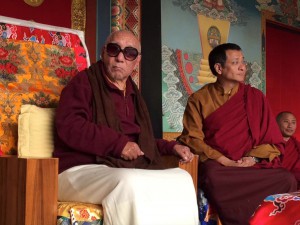
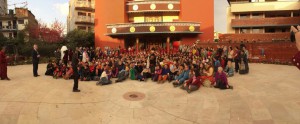
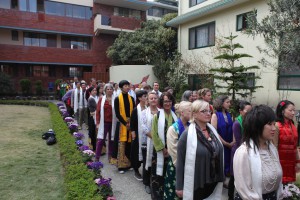
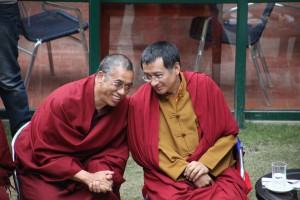
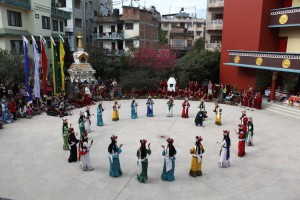
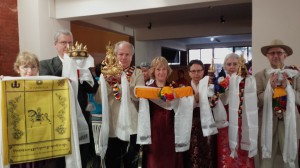

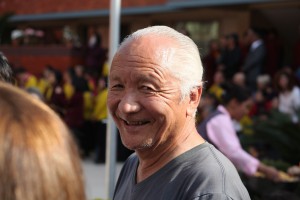
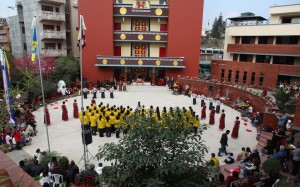
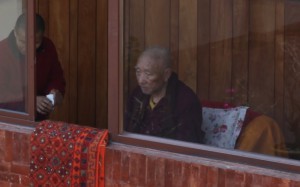
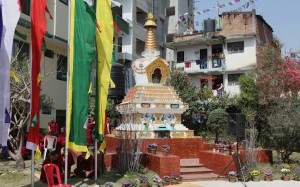




Mar 28, 2014
Reply
Thank you for this report Walker Blaine. I’m glad Khenpo Rinpoche is doing well. He is still teaching us with his recorded teachings from Karma Choling, for which I for one am extremely grateful.
Mar 27, 2014
Reply
You should be kind to women and not remove honest comments that express criticism.